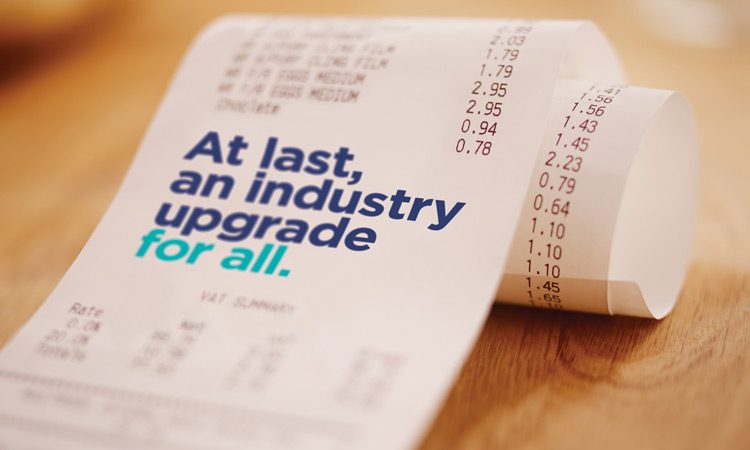Improving, correcting and preventing product data inaccuracies
- Like
- Digg
- Del
- Tumblr
- VKontakte
- Buffer
- Love This
- Odnoklassniki
- Meneame
- Blogger
- Amazon
- Yahoo Mail
- Gmail
- AOL
- Newsvine
- HackerNews
- Evernote
- MySpace
- Mail.ru
- Viadeo
- Line
- Comments
- Yummly
- SMS
- Viber
- Telegram
- Subscribe
- Skype
- Facebook Messenger
- Kakao
- LiveJournal
- Yammer
- Edgar
- Fintel
- Mix
- Instapaper
- Copy Link
Posted: 10 June 2019 | Jim Dickson (GS1 UK) | No comments yet
Transferring data between retailer and supplier is a loose cog in the ‘instant data access’ machinery, explains Jim Dickson, Head of Retail at GS1 UK. This article highlights how modern-day consumer demands are tightening the vise of this already pressing issue, and presents a platform aimed at solving the problem.


At a time when the application of technology is accelerating at an unprecedented rate within the retail sector, the standards demanded by consumers are rising in correlation.
But for every biometric fingerprint scan and checkout-less shop that dominates the headlines, consumers also want front-of-store innovations to extend to efficiencies behind the scenes.
There is a growing expectation for product data to be properly displayed with heightened clarity regarding elements such as allergens and nutritional value. You need look no further than recent allergy scandals, such as the Pret a Manger case, to understand just how important it is to have detailed information around a product’s composition and provenance.
The BBC recently reported that the Food Standards Agency has proposed that food outlets list all ingredients in order to protect customers with allergies, again emphasising the prevalence of this issue.
A combination of tightening regulations and a more discerning consumer base is driving the necessity for accurate, detailed product data for retailers and suppliers alike.
Fast accurate data demands
Added to this already potent mix, is the fact that we’re living in an age where speed of delivery is not just desired but expected. Just as we insist on instant access to the latest episodes of popular TV boxsets, consumers are also starting to apply these expectations to purchases in a retail and grocery context.
Products need to be quickly attainable, placing added pressure on the transfer of data between retailers and suppliers. The need for fast access to data is also contributing to more errors in the data-transfer process, leaving records incomplete or inaccurate.
At present, we have established that one in three products fails the independent physical check that validates the accuracy and consistency of product data.
The supplier-retailer link
The main contributory factor to this broken process, is the lack of a universal means of transferring data between suppliers and retailers. Simply, this must be addressed with more urgency than it is.
A lot of detail is involved, and precision is needed in the process of moving products purchased from supplier to store. Research carried out by GS1 UK has found that the average large FMCG supplier can be working with as many as 55 grocery retailers and wholesalers.
The lack of a singular point of contact makes issues concerning data management harder to resolve and a solution to streamline activities must be suitably intricate.
The health of the retail sector, and our economy as a whole, is suffering due to the money and time wasted on systems that aren’t up to scratch and fail to properly integrate with one another.
A retail sector without access to GS1’s GTIN (global trade item number) technology is almost inconceivable. There are more than five billion successful scans of a GS1 barcode every day and the organisation has more than two million members worldwide.
Here in the UK, our membership has reached an all-time high of 38,000. We are perfectly placed to advise on how to safeguard the accuracy of product data, and without our barcodes, that integrity would be compromised by the need to manually enter product data and all of the human error that process brings.


Big brands commit to industry standard
We’ve been working since 2016 to resolve the problems in product data and to minimise its escalation. Our retail grocery advisory board – which includes Tesco, Sainsbury’s, Waitrose, Co-Op, Ocado, Unilever, Nestlé and PepsiCo – identified product data management as a key concern.
In 2017, they signed an industry charter announcing their commitment to move to a single solution for managing and exchanging data. This led to the creation of productDNA, a solution to the problems surrounding the transfer of product data in the supply chain.
Launched in May 2018, the productDNA platform is a single catalogue of high-quality product data that can be shared with multiple grocery retailers, using an industry-agreed set of attributes and a common data definition for each type of product.
Part of the service includes a physical check of the weight, dimensions and on-pack information of the products entered into the system, carried out by an independent third party, XPO Logistics.
It is at this point that many brands have traditionally come unstuck, misidentifying the products they trade, leading to potential issues when the data is input into a retailers’ systems.
Currently, the service has the capacity to define and manage more than 150 industry-agreed data attributes for products across the grocery sector, including physical product data such as dimensions, weight and volume, as well as nutritional values, ingredients and allergens.
Brands both large and small have already begun to reap the rewards of the productDNA platform, and when used to its fullest potential, the process ensures improved efficiency and better confidence in the quality of data being provided to retailers.
Significant time savings
productDNA is especially useful when it comes to new product lines and reduced go-to-market times. For instance, in the 12 months that Nestlé has been using the productDNA platform, it has taken new-line submission times down from 15 minutes to just five minutes, creating an efficiency saving of 67 percent.
If we convert the future widespread – and potentially universal – use of productDNA into measurable results, similar systems implemented by companies overseas have allowed them to increase their sales figures by up to three percent. Scaled to the size of the UK economy, this could mean an extra £20 billion for the UK’s retail grocery industry.
But it’s not purely about cost savings and the bottom line. While these are clearly considerations for businesses, keeping in line with regulations and being clear and transparent to shoppers is of equal importance. In extreme cases, accurate product data could mean the difference between life and death.


Related topics
Packaging & Labelling, retail, Technology & Innovation, The consumer









